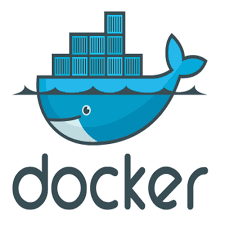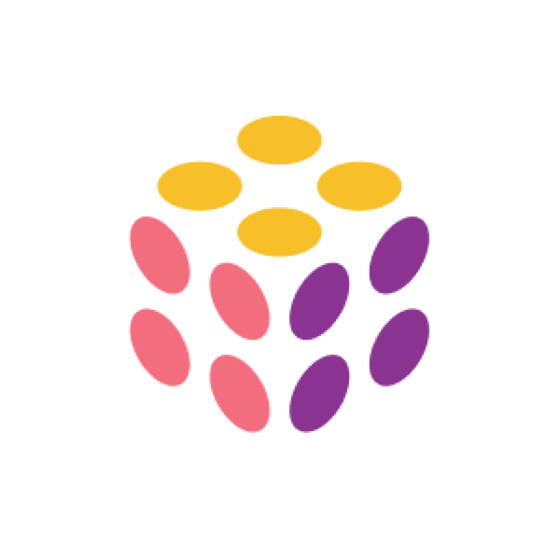Best AI Tools for DevOps Shortlist
Here's my pick of the 10 best software from the 21 tools reviewed.
Our one-on-one guidance will help you find the perfect fit.
As a tech expert, you face numerous challenges within the complex DevOps environment. From managing infrastructures to ensuring rapid deployment cycles, the pressure is constant. AI tools for DevOps are here to help you manage these tasks more efficiently, reducing errors and saving valuable time.
In this article, I'll share my top AI tool picks for DevOps that I've put to the test. I'll offer unbiased insights into each tool's strengths and limitations, highlighting how they can make your team's workflow smoother and more productive. Get ready to discover solutions that align with your unique needs and elevate your DevOps processes.
Why Trust Our Software Reviews
We've been testing and reviewing SaaS development software since 2023. As tech experts ourselves, we know how critical and difficult it is to make the right decision when selecting software. We invest in deep research to help our audience make better software purchasing decisions.
We've tested more than 2,000 tools for different SaaS development use cases and written over 1,000 comprehensive software reviews. Learn how we stay transparent & check out our software review methodology.
Best AI Tools for DevOps Summary
This comparison chart summarizes pricing details for my top AI tools for DevOps selections to help you find the best one for your budget and business needs.
| Tool | Best For | Trial Info | Price | ||
|---|---|---|---|---|---|
| 1 | Best for business metrics monitoring | Free demo available | Pricing upon request | Website | |
| 2 | Best for incident automation | Free demo available | From $9/user/month (billed annually) | Website | |
| 3 | Best for Kubernetes security | Not available | Pricing upon request | Website | |
| 4 | Best for real-time topology views | 14-day free trial | From $20/node | Website | |
| 5 | Best for autonomous incident detection | Free trial available | From $5/device/month | Website | |
| 6 | Best for noise reduction in alerts | Free demo available | Pricing upon request | Website | |
| 7 | Best for SRE collaboration | Free demo available | Pricing upon request | Website | |
| 8 | Best for hybrid IT operations | Free demo available | Pricing upon request | Website | |
| 9 | Best for AI-driven DevOps workflows | Free demo available | Pricing upon request | Website | |
| 10 | Best for hybrid infrastructure monitoring | 14-day free trial | Pricing upon request | Website |
-

Docker
Visit WebsiteThis is an aggregated rating for this tool including ratings from Crozdesk users and ratings from other sites.4.6 -

Pulumi
Visit WebsiteThis is an aggregated rating for this tool including ratings from Crozdesk users and ratings from other sites.4.8 -

GitHub Actions
Visit Website
Best AI Tools for DevOps Reviews
Below are my detailed summaries of the best AI tools for DevOps that made it onto my shortlist. My reviews thoroughly examine each tool’s key features, pros & cons, integrations, and ideal use cases to help you find the best one.
Anodot leverages machine learning to autonomously track large datasets, identify deviations, and correlate them with relevant business impact. It continuously learns patterns and provides insights to help organizations optimize performance and prevent costly disruptions.
Why I picked Anodot: Anodot provides real-time data visualization to help you spot trends quickly. It learns the expected behavior of your business metrics and detects anomalies without manual thresholds. The tool’s real-time alert catches incidents as they happen, reducing potential revenue loss. Additionally, its ability to monitor 100% of your data streams ensures comprehensive coverage of your business operations.
Standout features & integrations:
Features include real-time analytics dashboards that offer instant insights, customizable alerts to notify your team of important events, and predictive analytics to forecast future trends. Anodot also provides detailed metric tracking to help you monitor performance effectively.
Integrations include AWS, Azure, Google Cloud, Snowflake, Datadog, Slack, PagerDuty, ServiceNow, Grafana, and Splunk.
Pros and cons
Pros:
- Predictive analytics capabilities
- Automatic anomaly detection
- Real-time data visualization
Cons:
- Potential for false positives
- Dependency on ongoing data input
BigPanda accelerates incident resolution by correlating alerts, detecting incidents, and automating response workflows in real time. Its AI-powered root cause analysis identifies incident patterns and sets remediation workflows to increase efficiency and prevent outages.
Why I picked BigPanda: BigPanda’s AI event management transforms noise into relevant insights so your team can detect situations and triage quickly. The tool’s automated incident analysis uses generative AI to provide plain-language summaries for faster troubleshooting, while its workflow automation enhances processes by triggering automated tools across various states. Additionally, its correlation engine groups related alerts into a single incident to minimize noise.
Standout features & integrations:
Features include dynamic alert correlation that reduces noise by grouping alerts, real-time dashboards to monitor incident status, and automated root cause analysis to speed up resolutions. BigPanda also offers customizable workflows to fit your team's processes.
Integrations include ServiceNow, Splunk, Jira, Slack, Amazon Web Services, Microsoft Azure, Google Cloud Platform, New Relic, Dynatrace, and Datadog.
Pros and cons
Pros:
- Real-time monitoring dashboards
- Reduces alert noise
- Effective incident automation
Cons:
- Dependency on accurate data inputs
- Resource-intensive operations
StackRox is open source and integrates with Kubernetes to provide visibility into workloads, enforce runtime security policies, and identify misconfigurations or vulnerabilities. Its AI-driven risk profiling adapts to threats, ensuring security at every stage of the container lifecycle.
Why I picked StackRox: StackRox’s integration with Kubernetes enables your team to identify and address security issues directly within your container orchestration platform. Its policy engine offers built-in controls to enforce security best practices and industry standards for effortless compliance. Additionally, StackRox's real-time threat detection capabilities allow your team to respond swiftly to potential risks, ensuring the security of your applications throughout their lifecycle.
Standout features & integrations:
Features include automated policy enforcement to maintain security standards, detailed risk profiling to pinpoint vulnerabilities, and runtime visibility to monitor your Kubernetes environment. StackRox also offers compliance checks to ensure adherence to industry regulations.
Integrations include Red Hat OpenShift, Amazon EKS, Google Kubernetes Engine, Azure Kubernetes Service, Jenkins, GitLab, Splunk, Slack, PagerDuty, and Sysdig.
Pros and cons
Pros:
- Automated policy enforcement
- Real-time threat detection
- Strong Kubernetes-focused security
Cons:
- Limited policy customization
- Technical setup complexity
StackState provides a complete and continuously updated map of an organization’s IT infrastructure. It correlates metrics, logs, traces, and events with an adaptive topology model for teams to visualize dependencies across hybrid cloud systems.
Why I picked StackState: StackState lets you see all parts of your IT stack connect to spot and fix problems quickly. Its dynamic dashboards combine metrics, logs, and events to visualize application dependencies and understand complex systems. The platform also offers out-of-the-box monitors, guided remediation, and a time travel feature to look back at your IT stack’s past states.
Standout features & integrations:
Features include dynamic dashboards that offer customizable views, data correlation to connect logs and metrics, and dependency maps for visualizing application components. The platform provides out-of-the-box monitors to streamline setup and remediation guides to assist in problem-solving.
Integrations include OpenTelemetry, Splunk, Prometheus, AWS, Azure, Google Cloud, ServiceNow, Jira, Slack, and Datadog.
Pros and cons
Pros:
- Topology time machine
- Auto-tuned baselines
- Time travel debugging
Cons:
- Requires setup customization
- Complex integrations management
Zebrium uses unsupervised machine learning to detect patterns, anomalies, and correlations across system data without manual configuration. It automatically surfaces incidents and pinpoints their root cause by clustering related log events and metric deviations, reducing the time for troubleshooting.
Why I picked Zebrium: Zebrium automatically identifies correlated clusters of anomalies and errors and presents them in root cause analysis (RCA) reports. By connecting your logs to Zebrium's ML engine, you can receive RCA reports highlighting the underlying causes of problems, helping you resolve incidents more efficiently. Additionally, Zebrium integrates with your existing observability dashboards, allowing you to visualize suggested alerts alongside your current monitoring data.
Standout features & integrations:
Features include root cause analysis that dives deep into the logs to find problems, customizable alerting to notify your team of issues, and anomaly detection to identify irregular patterns. The platform's dashboards provide a clear overview of system health and performance.
Integrations include Slack, Jira, Datadog, PagerDuty, ServiceNow, Splunk, Elastic, AWS, Azure, and Google Cloud.
Pros and cons
Pros:
- Integrates with observability dashboards
- Root cause analysis reports
- Autonomous incident detection
Cons:
- Initial learning period required
- Limited customization options
Moogsoft automatically deduplicates, correlates, and prioritizes alerts, filtering out irrelevant signals to help teams focus on critical issues. It applies anomaly detection and pattern recognition to consolidate alerts into actionable incidents and accelerate response times.
Why I picked Moogsoft: Moogsoft's noise reduction feature employs machine learning to filter out non-essential alerts and only focus on critical issues. Its anomaly detection capabilities identify incidents as they develop for early intervention. The platform's advanced correlation connects related alerts for a clearer understanding of root causes, and its real-time collaboration tools keep your team connected during incident resolution.
Standout features & integrations:
Features include dynamic thresholds that adapt to changing conditions, root cause analysis to pinpoint issues quickly, and virtual war rooms for team collaboration. Moogsoft also provides proactive anomaly detection to prevent incidents before they occur.
Integrations include ServiceNow, Slack, PagerDuty, Splunk, Amazon Web Services, Microsoft Azure, Google Cloud Platform, New Relic, Dynatrace, and Datadog.
Pros and cons
Pros:
- Self-service functionalities
- Proactive anomaly detection
- Automated noise reduction
Cons:
- Requires customization for best results
- High learning curve
Blameless provides real-time incident coordination, integrates with popular DevOps tools, and offers AI-driven insights to improve reliability and reduce downtime. It guides teams through structured incident response, centralizes communication, and enables proactive reliability improvements.
Why I picked Blameless: Blamessless’ incident response feature allows collaboration directly within tools like Slack, Microsoft Teams, and Google Chat. It provides incident retrospectives so your team can analyze incidents without finger-pointing. It also has incident analytics to help you uncover trends that impact reliability and give you actionable insight to enhance system performance and maintain service levels.
Standout features & integrations:
Features include automated incident timelines that provide detailed event records, customizable SLAs to align with your team’s goals, and reliability insights to track system health. Blameless also offers runbooks to guide your team through incident resolution.
Integrations include Slack, Jira, PagerDuty, Zoom, Microsoft Teams, Datadog, OpsGenie, ServiceNow, VictorOps, and GitHub.
Pros and cons
Pros:
- Incident impact calculator
- Reliability assessment tools
- Detailed post-incident reviews
Cons:
- Not ideal for non-SRE teams
- Limited support for hybrid cloud setups
OpsRamp integrates across on-premises, cloud, and containerized environments and uses AI-powered event correlation and anomaly detection to reduce alert noise and pinpoint issues. It offers centralized visibility and enables self-healing workflows, so IT teams can efficiently manage distributed systems.
Why I picked OpsRamp: OpsRamp’s hybrid observability feature provides comprehensive visibility into your entire IT system, allowing your team to monitor performance and availability effectively. The platform's AI-driven event management leverages machine learning to detect and resolve incidents. Meanwhile, its intelligent automation enhances IT processes by automating repetitive tasks. It also offers customizable dashboards for tailoring the monitoring to your needs.
Standout features & integrations:
Features include automated IT asset discovery that keeps track of your infrastructure, incident management tools for quick issue resolution, and unified monitoring across hybrid environments. OpsRamp also offers customizable dashboards to provide insights that match your team's requirements.
Integrations include ServiceNow, Splunk, Microsoft Azure, Amazon Web Services, Google Cloud Platform, VMware, Slack, PagerDuty, BMC, and SolarWinds.
Pros and cons
Pros:
- Customizable monitoring dashboards
- Automated asset discovery
- Comprehensive hybrid IT monitoring
Cons:
- Customization requires technical expertise
- Initial setup complexity
Kubiya acts as a conversational AI assistant, integrating with DevOps tools to automate repetitive tasks, enforce policies, and accelerate troubleshooting. It transforms complex operations into simple commands and optimizes response times.
Why I picked Kubiya: Kubiya’s AI-driven approach allows the automation of complex workflows without manual scripting. It provides intelligent task management, helping your team prioritize and execute tasks efficiently. The tool’s AI algorithms learn from your operations and offer insights to optimize workflows and monitor issues in real-time.
Standout features & integrations:
Features include intelligent task management that helps prioritize work, real-time operations tracking, and AI-driven insights to improve workflow efficiency. Kubiya also offers customizable dashboards to view your DevOps processes.
Integrations include GitHub, GitLab, Jenkins, Docker, Kubernetes, AWS, Azure, Google Cloud, Slack, and Jira.
Pros and cons
Pros:
- Customizable dashboards
- Intelligent workflow optimization
- AI-driven task automation
Cons:
- Real-time debugging challenges
- Not ideal for ad-hoc tasks
LogicMonitor AIOps offers clear visibility into hybrid infrastructure, including on-premises, cloud, and containerized environments. It delivers predictive insights and automated remediation to keep systems running efficiently, forecast performance trends, and reduce alert fatigue by correlating logs and metrics.
Why I picked LogicMonitor AIOps: LogicMonitor AIOps has an agentless architecture for smooth deployment, providing real-time insights into your entire system without manual configurations. The platform's AI-driven capabilities, such as dynamic thresholds and anomaly detection, help your team identify potential issues before they impact operations. LogicMonitor's forecasting features also enable capacity planning for your infrastructure to scale with business demands.
Standout features & integrations:
Features include predictive alerting that forecasts potential system issues, automated resource discovery to keep track of all assets, and customizable dashboards for tailored insights. LogicMonitor also provides detailed performance metrics to ensure system reliability.
Integrations include Amazon Web Services, Microsoft Azure, Google Cloud Platform, VMware, Cisco, Dell, ServiceNow, Slack, PagerDuty, and Splunk.
Pros and cons
Pros:
- Automated resource discovery
- Predictive alerting capabilities
- Comprehensive hybrid monitoring
Cons:
- No deep code-level troubleshooting features
- Limited alert customization
Other AI Tools for DevOps
Here are some additional AI tools for DevOps options that didn’t make it onto my shortlist but are still worth checking out.
- Snyk
For developer security tools
- OverOps
For code-level insights
- Dynatrace
For real-time performance analytics
- Atlassian Intelligence
For team collaboration enhancements
- Sysdig
For container security monitoring
- New Relic Applied Intelligence
For automated anomaly detection
- GitHub Copilot
For AI-powered code suggestions
- Splunk IT Service Intelligence (ITSI)
For service health monitoring
- PagerDuty AIOps
For incident response automation
- Amazon CodeGuru
For code quality optimization
- AppDynamics Cognition Engine
For application performance insights
AI Tools for DevOps Selection Criteria
When selecting the best AI tools for DevOps to include in this list, I considered everyday buyer needs and pain points like the ability to automate repetitive tasks and the need for real-time monitoring. I also used the following framework to keep my evaluation structured and fair.
Core Functionality (25% of total score)
To be considered for inclusion in this list, each solution had to fulfill these everyday use cases:
- Automate deployment processes
- Monitor system performance
- Manage infrastructure configuration
- Facilitate continuous integration
- Provide real-time analytics
Additional Standout Features (25% of total score)
To help further narrow down the competition, I also looked for unique features, such as:
- Predictive analytics for future trends
- Advanced security features
- Customizable dashboards
- Machine learning integrations
- Multi-cloud support
Usability (10% of total score)
To get a sense of the usability of each system, I considered the following:
- Intuitive user interface
- Minimal learning curve
- Easy navigation
- Responsive design
- Customizable user settings
Onboarding (10% of total score)
To evaluate the onboarding experience for each platform, I considered the following:
- Availability of training videos
- Interactive product tours
- Access to templates
- Support from chatbots
- Webinars for new users
Customer Support (10% of total score)
To assess each software provider’s customer support services, I considered the following:
- 24/7 support availability
- Multiple contact options
- Response time
- Knowledgeable staff
- Access to a support community
Value For Money (10% of total score)
To evaluate the value for money of each platform, I considered the following:
- Competitive pricing
- Feature set relative to the cost
- Flexibility of pricing plans
- Hidden fees
- Discounts for annual payments
Customer Reviews (10% of total score)
To get a sense of overall customer satisfaction, I considered the following when reading customer reviews:
- Overall satisfaction ratings
- Feedback on reliability
- Comments on ease of use
- Opinions on customer support
- Reports of frequent issues
How to Choose AI Tools for DevOps
It’s easy to get bogged down in long feature lists and complex pricing structures. Here's a checklist of factors to remember to help you stay focused as you work through your unique software selection process.
| Factor | What to Consider |
| Scalability | Ensure the tool can grow with your team, handling increased loads without issues. |
| Integrations | Check if it integrates seamlessly with your existing DevOps tools and platforms. |
| Customizability | Look for options to tailor the tool to fit your workflows and processes. |
| Ease of Use | The tool should have an intuitive interface, making it easy for your team to adopt. |
| Budget | Consider the total cost of ownership, including licensing and potential hidden fees. |
| Security Safeguards | Verify that the tool complies with industry standards and protects your data. |
| Support | Evaluate the vendor's customer support options for prompt assistance when needed. |
| Performance | Assess the tool's reliability and speed to ensure it meets your operational demands. |
Trends in AI Tools for DevOps
In my research, I sourced countless product updates, press releases, and release logs from different AI tools for DevOps vendors. Here are some of the emerging trends I’m keeping an eye on.
- AI-driven insights: Vendors are enhancing tools with AI to predict system failures before they happen. This trend helps teams proactively address issues, saving time and resources. Some tools now offer predictive maintenance features to improve reliability.
- DevSecOps integration: Security is being integrated into the DevOps process, known as DevSecOps. Tools are adding features to automate security checks during development, helping teams catch vulnerabilities early. This trend ensures security is a priority from the start.
- Infrastructure as Code (IaC): More tools support IaC in managing infrastructure through code. This allows teams to automate infrastructure setup and changes, making it consistent and repeatable. It's becoming a key feature for efficient infrastructure management.
- GitOps adoption: GitOps is emerging as a practice for managing Kubernetes clusters and application delivery. It uses Git as a single source of truth for declarative infrastructure and applications. This approach enhances collaboration and makes changes traceable.
- Chaos engineering capabilities: Some tools incorporate chaos engineering to test system resilience. This trend involves intentionally introducing failures to see how systems respond, helping teams identify weaknesses. It’s gaining traction as a way to ensure solid systems.
What Are AI Tools for DevOps?
AI tools for DevOps are software solutions that automate and enhance the development and operations processes using artificial intelligence. They are used by developers, IT operations teams, and site reliability engineers to improve efficiency and reduce manual workload.
Its features include predictive analytics, real-time monitoring, and security integration, helping teams manage incidents, optimize performance, and ensure compliance. These tools offer significant value by enabling faster development cycles and more reliable system operations.
Features of AI Tools for DevOps
When selecting AI tools for DevOps, keep an eye out for the following key features:
- Predictive analytics: Uses AI to forecast potential issues, allowing teams to address them before they cause problems.
- Infrastructure as code: Manages infrastructure through code, ensuring consistent and repeatable setups.
- Chaos engineering: Tests system resilience by introducing controlled failures to uncover weaknesses.
- DevSecOps integration: Automates security checks during development to catch vulnerabilities early.
- Real-time monitoring: Provides continuous oversight of system performance for quick issue detection.
- Scalability: Adapts to growing workloads, maintaining performance as your needs expand.
- Customizable dashboards: Offers tailored views of metrics and data, helping teams focus on what's important.
- Multi-cloud support: Allows integration with various cloud providers for flexible deployment options.
- Automated deployments: Streamlines the release process, reducing manual intervention and errors.
- Collaboration tools: Enhances team communication and coordination, aligning efforts across development and operations.
- Support for DevOps teams: Provides AI-driven insights and recommendations tailored for collaborative DevOps workflows.
- Open-source integration: Supports popular open-source tools, ensuring flexibility and customization.
- Advanced algorithms: Leverages AI algorithms for anomaly detection, performance optimization, and proactive issue resolution.
- Integration with Amazon services: Supports AWS-specific tools like CodeGuru, enhancing performance and code quality.
- Code quality analysis: Ensures adherence to best practices through automated code reviews and suggestions.
- GitHub and repository integration: Seamlessly connects with GitHub and other repositories to streamline code management.
- Incident response automation: Enables faster remediation with AI-driven insights and pre-configured workflows.
- Enhanced software delivery: Optimizes the entire software delivery lifecycle with intelligent automation and monitoring.
- Application performance insights: Monitors key metrics to ensure high application performance and quick troubleshooting.
- Code reviews with AI: Automates code reviews to identify vulnerabilities, inefficiencies, and potential improvements.
- Generative AI for DevOps: Uses AI models to generate configurations, scripts, or documentation for DevOps practices.
- Automated provisioning: Streamlines cloud and on-premise resource provision based on defined policies.
- Anomaly detection: Identifies unusual patterns in system behavior, reducing downtime and enabling proactive fixes.
- Codebase analysis: Evaluates the entire codebase for errors, inefficiencies, and areas for optimization.
- Dataset utilization: Leverages historical data and datasets to optimize DevOps workflows.
- Orchestration of microservices: Simplifies the management of containerized and microservices-based architectures.
- Support for Harness: Integrates with Harness to enhance CI/CD pipelines and release automation.
- Integration with IDEs: Provides tools directly in IDEs for debugging, testing, and code optimization.
- Enhanced orchestration: Coordinates complex workflows and services across cloud environments.
- Root cause analysis: Identifies the underlying causes of issues to prevent future occurrences.
- Troubleshooting assistance: Offers AI-driven insights and recommendations for faster debugging.
- Docker and container support: Integrates with Docker for containerized application management and orchestration.
- Historical data analysis: Uses past performance and incident data to improve future predictions and actions.
- Security threat detection: Identifies and mitigates potential security vulnerabilities across environments.
Benefits of AI Tools for DevOps
Implementing AI tools for DevOps provides several benefits for your team and your business. Here are a few you can look forward to.
- Increased efficiency: Automates repetitive tasks and processes, freeing your team to focus on strategic activities.
- Enhanced reliability: Predictive analytics and real-time monitoring help catch issues before they escalate, improving system uptime.
- Improved security: DevSecOps integration ensures security measures are applied throughout development.
- Cost savings: Automating deployments and infrastructure management reduces the need for manual intervention, cutting labor costs.
- Scalability: Easily adapts to growing demands, ensuring your systems can handle increased workloads without hiccups.
- Better collaboration: Built-in communication tools help your team stay aligned and work together effectively across departments.
- Faster time-to-market: Streamlined development and deployment processes accelerate new releases, keeping you competitive.
Costs & Pricing of AI Tools for DevOps
Selecting AI tools for DevOps requires understanding the various pricing models and available plans. Costs vary based on features, team size, add-ons, and more. The table below summarizes standard plans, average prices, and typical features included in AI tools for DevOps solutions.
Plan Comparison Table for AI Tools for DevOps
| Plan Type | Average Price | Common Features |
| Free Plan | $0 | Basic monitoring, limited support, and community access. |
| Personal Plan | $5-$25/ user/month | Enhanced monitoring, basic automation, and email support. |
| Business Plan | $30-$60/ user/month | Advanced analytics, integration capabilities, and priority support. |
| Enterprise Plan | $70-$150/ user/month | Full customization, dedicated support, and comprehensive security features. |
AI Tools for DevOps FAQs
Here are some answers to common questions about AI tools for DevOps.
How do AI tools for DevOps improve deployment processes?
AI tools for DevOps use predictive analytics and automation to identify bottlenecks and optimize deployment pipelines. They help your team avoid common errors, reduce deployment time, and ensure consistency across environments. This makes it easier to handle frequent deployments without downtime or issues.
Can AI tools for DevOps integrate with my existing CI/CD pipeline?
Yes, most AI tools for DevOps are designed to integrate with popular CI/CD platforms like Jenkins, GitLab, and Azure DevOps. They analyze logs, monitor pipelines, and provide actionable insights to improve performance. You can connect them to your current setup without significant changes to your workflow.
What kind of data do AI tools for DevOps analyze?
These tools analyze a wide range of data, including application logs, system performance metrics, and deployment patterns. They look for anomalies, predict failures, and optimize resource usage. This helps your team make informed decisions and troubleshoot issues faster.
Are AI tools for DevOps suitable for small teams?
Yes, small teams can benefit from AI tools for DevOps, especially for automating repetitive tasks and identifying inefficiencies. Many tools offer scalable pricing plans that fit the needs of small teams. They can free up time for your team to focus on strategic goals instead of manual monitoring.
How do AI tools for DevOps handle security concerns?
AI tools for DevOps often come with built-in security monitoring and threat detection features. They scan your systems for vulnerabilities, analyze access patterns, and provide alerts for unusual activity. This proactive approach helps you maintain a secure environment while managing your workflows.
What are the typical onboarding requirements of AI tools for DevOps?
Onboarding usually involves connecting the tool to your existing systems, setting up monitoring parameters, and training your team to interpret the insights. Most vendors provide documentation or support to guide you through the setup. The process is typically straightforward, though the complexity may depend on your current infrastructure.
What’s Next?
Boost your SaaS growth and leadership skills. Subscribe to our newsletter for the latest insights from CTOs and aspiring tech leaders.
We'll help you scale smarter and lead stronger with guides, resources, and strategies from top experts!
























